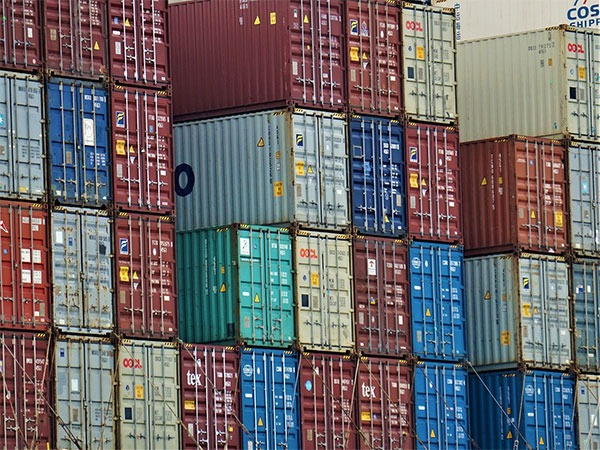New Delhi: The trade war with the U.S. has started taking its toll on China. Exports to the lucrative American market have shrunk. At Chinese export hubs in south-eastern China, factories are lying closed and workers have been laid off. Stocks of finished products are accumulating in warehouses.
China signed an agreement with the U.S. on May 12 for a temporary reduction in tariff but this did not have the desired effect. Factory activities in China continued to contract in May, with the Purchasing Managers Index at the end of May being 49.5. A PMI value less than 50 indicates contraction in business activities compared to the previous month.
Because of a contraction in export, business houses in major export hubs in places like Zhejiang, Guangdong, and Jiangsu are announcing factory holidays; suspending production and reducing work hours and wages of employees.
To clear the stockpile of goods at a discount, they are trying the social commerce platforms. Products ranging from yoga pants and footwear to home appliances and blankets which used to sell in the U.S. at fancy prices are now being sold online by Chinese exporting houses at bargain prices.
A survey carried out by Radio Free Asia last April at a warehouse at Jiaxing in the Zhejiang province, where export items constitute the main business activity, has revealed heaps of merchandise originally meant to be exported now lying abandoned.
Products selling at $100 in the U.S. do not sell in China even at a deeply discounted price of only a few dollars. Rubber clogs of U.S. footwear brand Crocs manufactured in China can sell in the American market for as high as $70 a pair but in the Chinese markets it is difficult to sell them even for a few pennies.
The comparative advantage of China lies in its large manufacturing base and thoroughly integrated supply chains; particularly in hi-tech and green industries such as electrical vehicles and their batteries and solar energy. These sectors are heavily dependent on open markets and steady demands.
Now the prohibitive tariff imposed by the Donald Trump government in the U.S. coming in the wake of earlier tariff restrictions imposed by the U.S., Europe and Canada on the import of Chinese electrical vehicles has caused demand to drop significantly for Chinese goods. Experts argue that China remains highly reliant on the U.S. as its top export market, to which it had exported goods worth nearly $450 billion in 2024.
The crisis in the export market has hit even items that are produced only for the domestic market in China because of the overall economic downswing. The crippling tariff rate imposed by the U.S. has stood in the way of the recovery of the already sagging consumer sentiments in China since the pandemic.
Like, the Chinese knife brand Zhang Xiaoquan is sold mostly in the domestic market; with exports accounting for less than one percent of the annual sales. But even that knife is selling at a few cents per knife.
One factory is pushing its employees to sell overstocked blankets online. A factory manager had lately managed to sell 60 blankets to his own relatives and friends. Workers in the factory at Suzhou city in Jiangsu were told that their working hours would be reduced and they would be paid only their basic wages.
An angry Beijing has threatened countermeasures against countries which are signing trade deals with the U.S. at the expense of China to get tariff exemptions from Washington. This threat has followed recent reports that President Donald Trump is seeking to use the tariff talks to push partners of the U.S. in trade to curb imports from China. In return, these countries could secure reductions in additional tariffs imposed by the U.S.
The Trump administration has said it is in negotiations with more than 50 countries; among them Israel, Japan, the U.K., Vietnam, Cambodia, Thailand, South Korea, India, Australia, Argentina, Canada, Mexico, Switzerland, Malaysia, Indonesia and the European Union countries. Beijing has threatened to target all these countries in turn.
Following the May 12 agreement with China, Washington had lowered its 145 percent tariff on Chinese goods to 30 percent for 90 days to allow for more negotiations.
Donald Trump had all along been accusing China of exploiting the U.S. in external trade, and arguing that his tariffs were necessary to revive domestic manufacturing in the U.S. and return jobs to American workers. China, too, had reduced its taxes on imports from the U.S. to 10 percent from the earlier 125 percent.
But this agreement is now in the process of coming unstuck. On May 30, the U.S. President accused China of violating a bilateral deal to roll back tariffs and announced a general increase in the tariff on the import of steel and aluminium to 50 percent.
Although China does not export much steel to the United States since the imposition of a 25 percent tariff in 2018 to shut out Chinese steel, it ranks third among aluminium suppliers to the U.S.
Washington has indicated that Beijing has been slow on its promise to issue export licences for rare earth minerals. Last December, China announced a ban on exports to the U.S. of critical minerals, including gallium, germanium and antimony.
Beijing announced more export controls on rare earth minerals last April after Donald Trump had announced the U.S. tariffs. The May 12 agreement in Geneva called for China to lift measures to restrict its export of critical metals needed for U.S. semiconductor, electronics and defence production.
US Treasury Secretary Scott Bessent has said in a recent interview that talks with China had stalled. US Trade Representative Jamieson Greer has said China has not removed non-tariff barriers as agreed. “We haven’t seen the flow of some of those critical minerals as they were supposed to be doing.”
The trade war with the U.S. has thus started taking its toll on China and there is little possibility that pressure on the Chinese economy will end soon.
